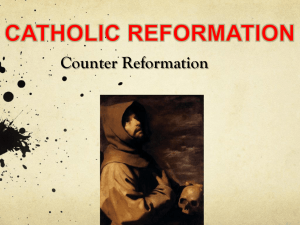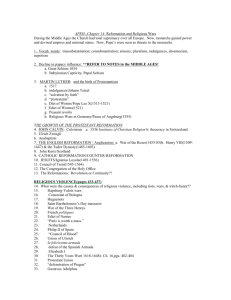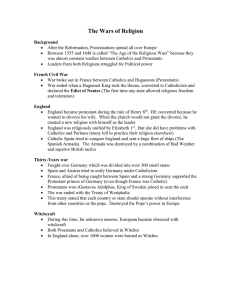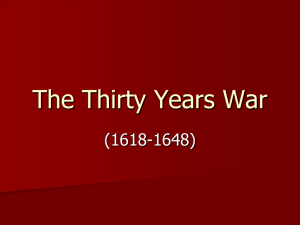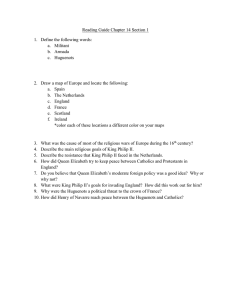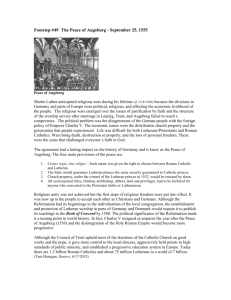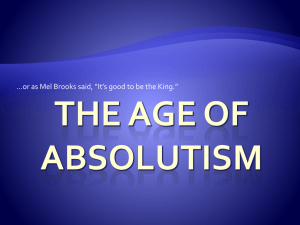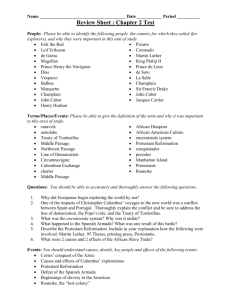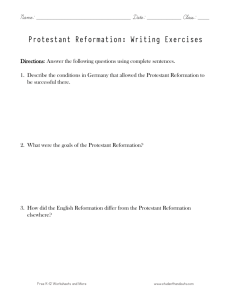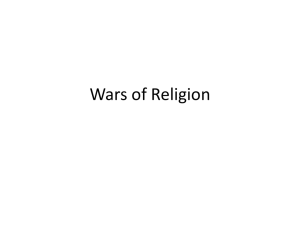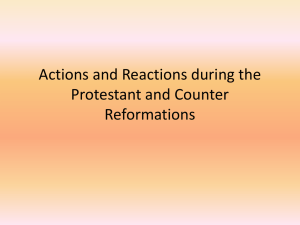Warm-up:
advertisement
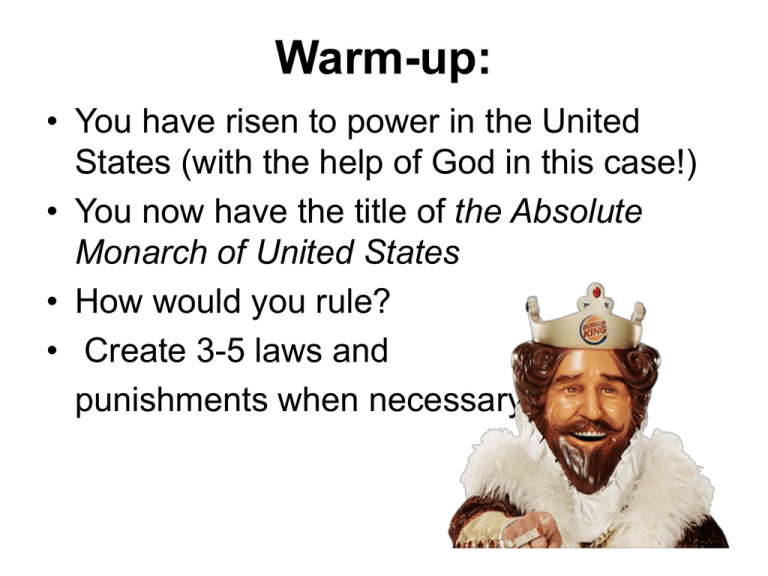
Warm-up: • You have risen to power in the United States (with the help of God in this case!) • You now have the title of the Absolute Monarch of United States • How would you rule? • Create 3-5 laws and punishments when necessary Wars of Religion • Post- Protestant and Counter Reformation • As Catholics and Protestants both tried to convert people to their beliefs, religious and political wars broke out across Europe. War in Germany (Holy Roman Empire) – Birthplace of the Reformation – But, the main ruler, Charles V, was Catholic – Many German princes were Protestant – Peace of Augsburg: Each prince could choose the religion of his territory – This resulted in an uneasy peace between Catholic and Protestant War and Conflict in France – Protestants in France were called Huguenots (French Calvinists) – Religious war between Catholics and Huguenots split France in the 1500s – In 1572, Catholics killed more than 20,000 Protestants in the St. Bartholomew's Day Massacre War and Conflict in France cont. – Finally in 1598, Henry IV (Huguenot converted to Catholicism) signed the Edict of Nantes, which called for an end to fighting between the two Christian groups – It also offered protection to Huguenots in France The Thirty Years’ War – Began when Protestant rebels threw 2 Catholics out a castle window – Brought devastation to central Europe, especially Germany – Approximately 1/3 of Germany’s population died – Ended in 1648 with the Treaty of Westphalia, which did the same thing the Peace of Augsburg had in the 1500s Wars of Religion and Rise of Absolutism A. Series of religious wars across Europe led to: 1. Instability within nations 2. Peace of Augsburg (1555) began empowering monarchy 3. Absolute monarchs already had foundation of power to build on 4. New Monarchs of Europe created larger territorial states—required more effective form of government 5. Increase in centralized power under monarch Seen as a natural response to the chaos of the religious wars.
